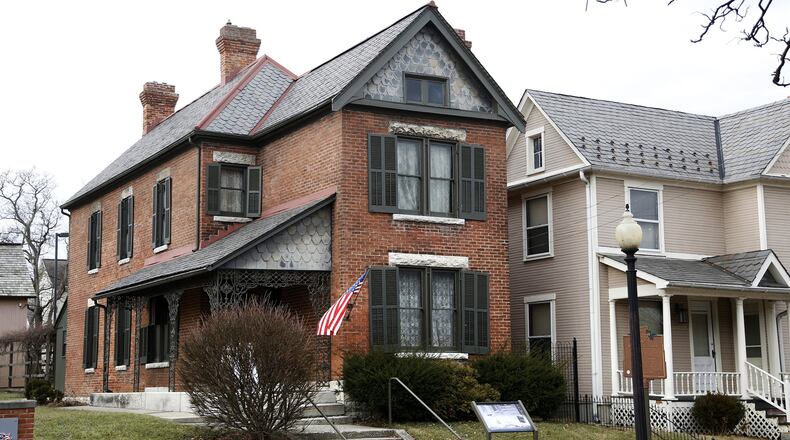The home, a National Historic Landmark, seems frozen in time as if the writer has just stepped out.
The desk in his study is covered with mementos from his travels. In fact, the Remington Standard typewriter he used to compose poems, letters and newspaper editorials sits on a small table in his bedroom.
Dunbar, who was chronically ill and had tuberculosis, spent his final years at the house and died in 1906 at age 33.
Matilda continued to live in the house until her death in 1934. In 1936, the home became the first state memorial to honor an African-American.
Dunbar was a prolific writer from an early age. At age 6, he wrote his first poem, “An Easter Ode.”
He attended the Tenth Street Elementary School and went on to attend Central High School, where he edited the “Dayton Tattler,” an African-American newspaper published by his classmate Orville Wright.
After high school he found work as an elevator operator in the Callahan Building in downtown Dayton, where he scribbled down bits of poetry between calls and studied the dialects of the riders. That work eventually led to his first self-published book, “Oak and Ivy,” which he sold for $1 to the people who rode his elevator.
Dunbar produced more than 400 works including 12 books of poetry, four novels, four books of short stories and the lyrics to many popular songs during his short career, according to the National Park Service.
The historic home will be open Friday through Monday from 10 a.m. to 4 p.m. Admission is free.
The tours will be held once an hour, on the half hour, beginning at 10:30 a.m. The last tour of the day will begin at 3:30 p.m.
Reservations are encouraged. To schedule a tour, e-mail Brad Sauls at: bradley_sauls@nps.gov.
More information about the historic site can be found here.
About the Author



